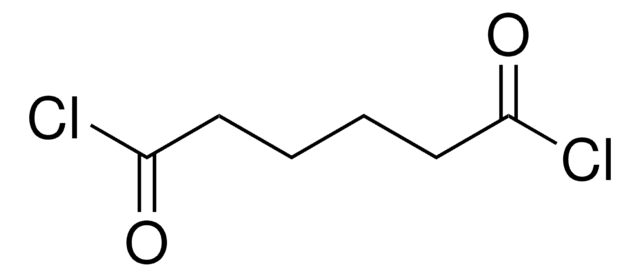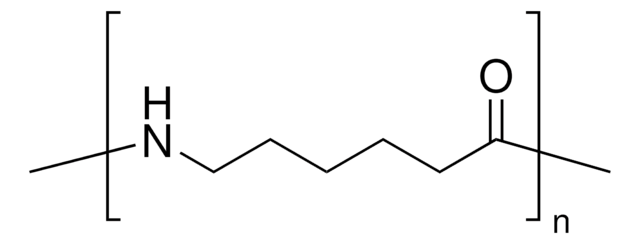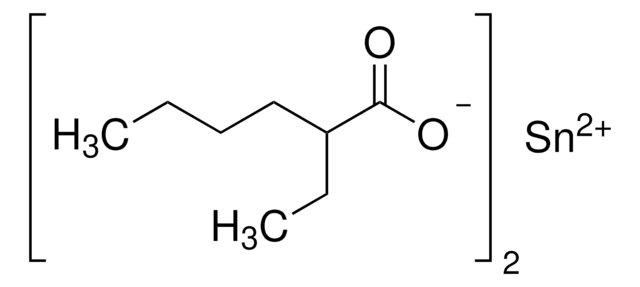236365
Sebacoyl chloride
99%
Synonym(s):
Sebacyl chloride
About This Item
Recommended Products
Quality Level
Assay
99%
form
liquid
refractive index
n20/D 1.468 (lit.)
bp
168 °C/12 mmHg (lit.)
mp
−5-−3 °C (lit.)
density
1.121 g/mL at 25 °C (lit.)
SMILES string
ClC(=O)CCCCCCCCC(Cl)=O
InChI
1S/C10H16Cl2O2/c11-9(13)7-5-3-1-2-4-6-8-10(12)14/h1-8H2
InChI key
WMPOZLHMGVKUEJ-UHFFFAOYSA-N
Looking for similar products? Visit Product Comparison Guide
Related Categories
Application
Signal Word
Danger
Hazard Statements
Precautionary Statements
Hazard Classifications
Acute Tox. 4 Oral - Eye Dam. 1 - Skin Corr. 1B - STOT SE 3
Target Organs
Respiratory system
Storage Class Code
8A - Combustible corrosive hazardous materials
WGK
WGK 3
Flash Point(F)
235.4 °F - closed cup
Flash Point(C)
113 °C - closed cup
Personal Protective Equipment
Choose from one of the most recent versions:
Already Own This Product?
Find documentation for the products that you have recently purchased in the Document Library.
Customers Also Viewed
Our team of scientists has experience in all areas of research including Life Science, Material Science, Chemical Synthesis, Chromatography, Analytical and many others.
Contact Technical Service










